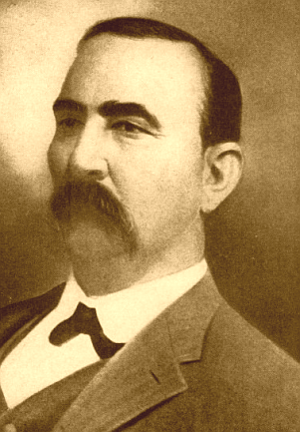William Charles Rogers facts for kids
Quick facts for kids
William C. Rogers
|
|
|---|---|

William Charles Rogers
|
|
| Born | December 13, 1847 Cherokee Nation, Indian Territory (now Tulsa County, Oklahoma)
|
| Died | November 8, 1917 (aged 69) Skiatook, Tulsa County, Oklahoma
|
| Occupation | Farmer, merchant, politician |
| Known for | Principal Chief of Cherokee Nation (1903-1917) |
William Charles Rogers (born December 13, 1847 – died November 8, 1917) was an important leader of the Cherokee Nation. He was born near what is now Skiatook, Oklahoma, USA. William Rogers was a successful farmer and businessman. He started working in tribal politics in 1881.
He served as a representative and a senator in the Cherokee Council. In 1903, he was elected as the Principal Chief of the Cherokee Nation. This was a very important role. He served during a time when the Cherokee government was changing. The U.S. government was preparing to make Oklahoma a state. After Oklahoma became a state, William Rogers continued to serve as chief. His role became more about representing the tribe. He held this position until he passed away.
Early Life and Beginnings
William Charles Rogers was the son of Charles Coody Rogers and Elizabeth McCorkle. He went to schools run by the Cherokee Nation. After finishing school, he decided to become a farmer, just like his father. He bought land about 2 miles (3.2 km) north of today's Skiatook, Oklahoma. There, he started his own farm.
In 1877, he built a general store on his land near Bird Creek. This store helped create the first town of Skiatook. During the American Civil War, William Rogers joined the Confederate Army. He served as a private from 1861. After the war ended, he returned to his farm and continued his work.
His Journey in Politics
William Rogers began his political career in 1881. He ran for election as a representative for the Cooweescoowee District of the Cherokee Nation. He won this election and was reelected in 1883. In 1889, he ran for the tribal senate from the same district. He was elected again in 1889.
In 1903, a political group called the "Downing Party" chose him as their candidate for Principal Chief. He ran against E. L. Cookson. William Rogers won the election. He became the last Principal Chief elected under the independent Cherokee Nation.
On November 9, 1904, Chief Rogers gave an important speech. This was at the last meeting of the Cherokee Council. He spoke about the big changes happening for the Cherokee people.
But a crisis in our affairs is at hand. The Government which our forefathers cherished and loved and labored so hard to perfect, has been sentenced to die. The scepter must soon pass to other hands. Still, we must force back the resentment we feel and accept the conditions as they are. The decrees of fate are inexorable. Representative bodies are usually brought together to organize or maintain a government; seldom indeed is the spectacle afforded of such a body of men calmly assembled together to prepare for its own dissolution and yet your coming together is largely for that purpose. The importance of this melancholy fact must not be underestimated or approached in a spirit of indifference. The best service of which you are capable is the demand of the hour and painstaking effort should characterize your every act so that the result may redound to the everlasting credit and benefit of our people.
Chief Rogers decided not to call an election for the National Council in 1905. He felt there was not enough work left to justify the cost of an election. However, an election was held without his approval. The newly elected members tried to remove Rogers as chief. They replaced him with Frank J. Boudinot. But the U.S. Congress had given the Secretary of the Interior the job of finishing the work with the Cherokee Nation. The Secretary said that Rogers was the rightful chief to sign documents for the tribe. He stayed in this important role until 1917.
William Rogers married Nannie Haynie on February 15, 1892, in Kansas City. He was a Freemason. He was buried in Hillside Mission Cemetery. This cemetery is about 3.5 miles (5.6 km) north of Skiatook, Oklahoma.

